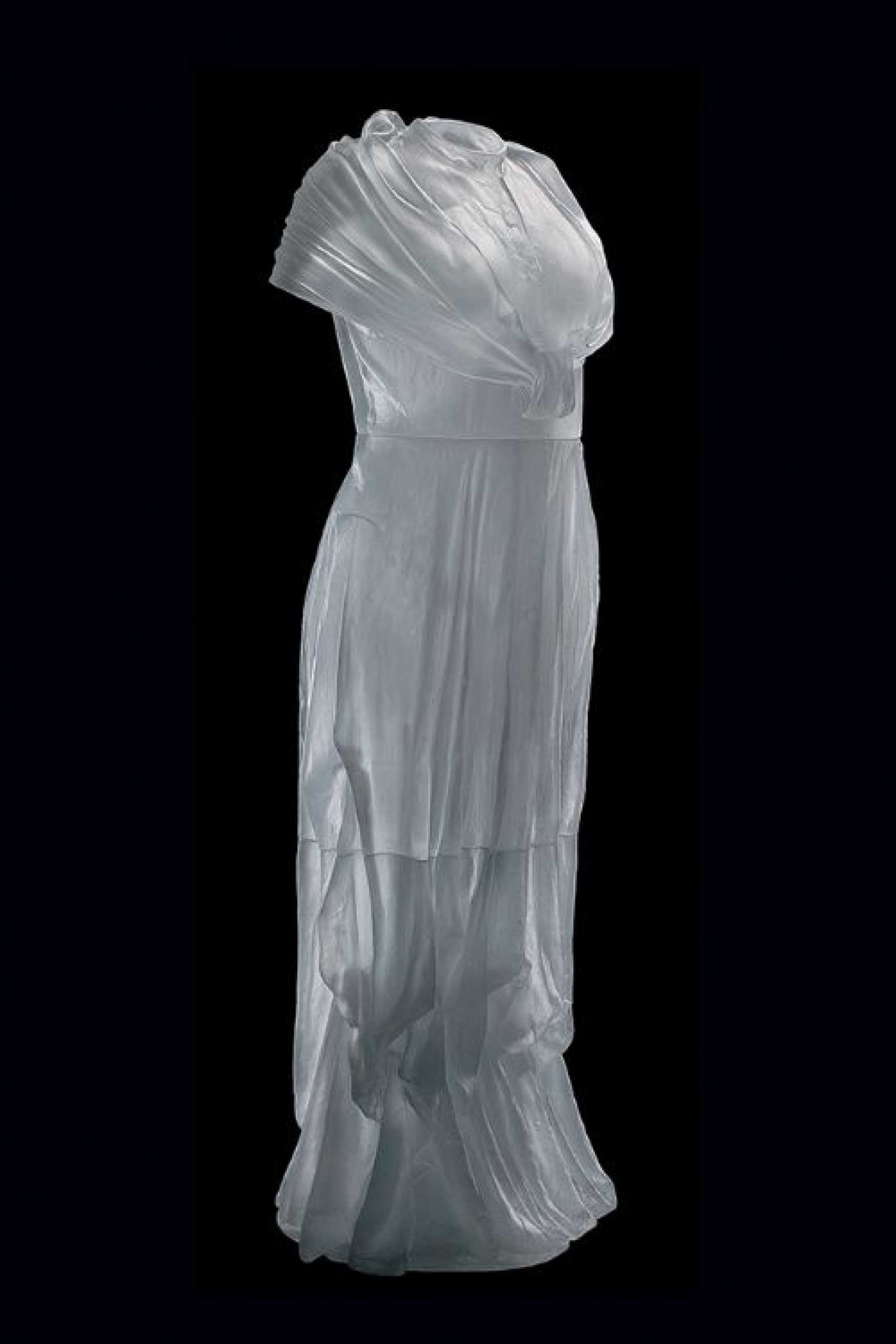Artworks of the Week
Karen LaMonte
Karen LaMonte re-interprets the dress as a sculptural form by employing a complex method of wax glass casting. She uses her own body or those of friends, students, or professional models to make the wax shell from which the glass forms are cast. In Pianist’s Dress Impression, the clinging fabric folds are reminiscent of the drapery forms in classical Greek marble sculptures. LaMonte simultaneously conceals and exposes the human body, with the translucency of the glass adding an eerie ghostliness.
LaMonte notes that in these works, “I use the absent nude cloaked in transparent glass dresses to investigate the tension between humanism and eroticism, the physical and the ethereal, the body and the spirit. The sculptures are at once intensely physical—muscles and flesh strain against clinging fabric—and yet insubstantial: the figures are absent, implied only by the shapes pressing against the clothing.”
LaMonte was born and grew up in New York City and attended Rhode Island School of Design. Her many prestigious fellowships include attendance at the Creative Glass Center of America and a Fulbright Scholarship to study at the Academy of Arts, Architecture and Design in Prague, where, in 2000, she created her first major work and soon gained critical acclaim. She has worked in the United States and in Japan; she now lives and works in Prague, Czech Republic.
Karen LaMonte (American, born 1967), Pianist’s Dress Impression, 2005, cast glass, 61 ½ x 21 ¼ x 19 ¾ inches. Museum purchase with funds provided by David Kaplan and Glenn Ostergaard, 11-2007 a-c.
Nathan Oliveira
Nathan Oliveira was born in Oakland, California to a family of Portuguese immigrants. He studied painting and printmaking at the California College of Arts and Crafts (now the California College of the Arts) in Oakland and became a prominent member of the Bay Area Figurative artists who turned away from the predominant focus in the 1950s on Abstract Expressionism, then characterizing the works of artists on both coasts. Instead, Oliveria’s movement towards figuration influenced a community of Bay Area artists that included Theophilus Brown, James Weeks, Paul Wonner, Manuel Neri, and Joan Brown, as well as his many students at California School of Fine Arts (now San Francisco Art Institute) and at Stanford University where he taught from 1964 until his retirement in 1995.
Standing Figure I exemplifies Oliveira’s concern with the human form. Like many of his works featuring a solitary figure, here the face is abstracted and the body is the focus. The figure stands upright, nearly human scale. While the figure’s tentative stance suggests that the person is seeking support, Oliviera nevertheless presents the spirited strength of the individual. This work features Oliveira’s typical use of impasto, gestural brushstrokes, and paint dripping freely down the canvas.
Nathan Oliveira (American, 1928-2010), Standing Figure I, 1989, oil and vine charcoal on canvas, 96 x 84 inches. Museum purchase with funds provided by the Contemporary Art Council, 1990, and the General Acquisition Fund, 1-1990.


